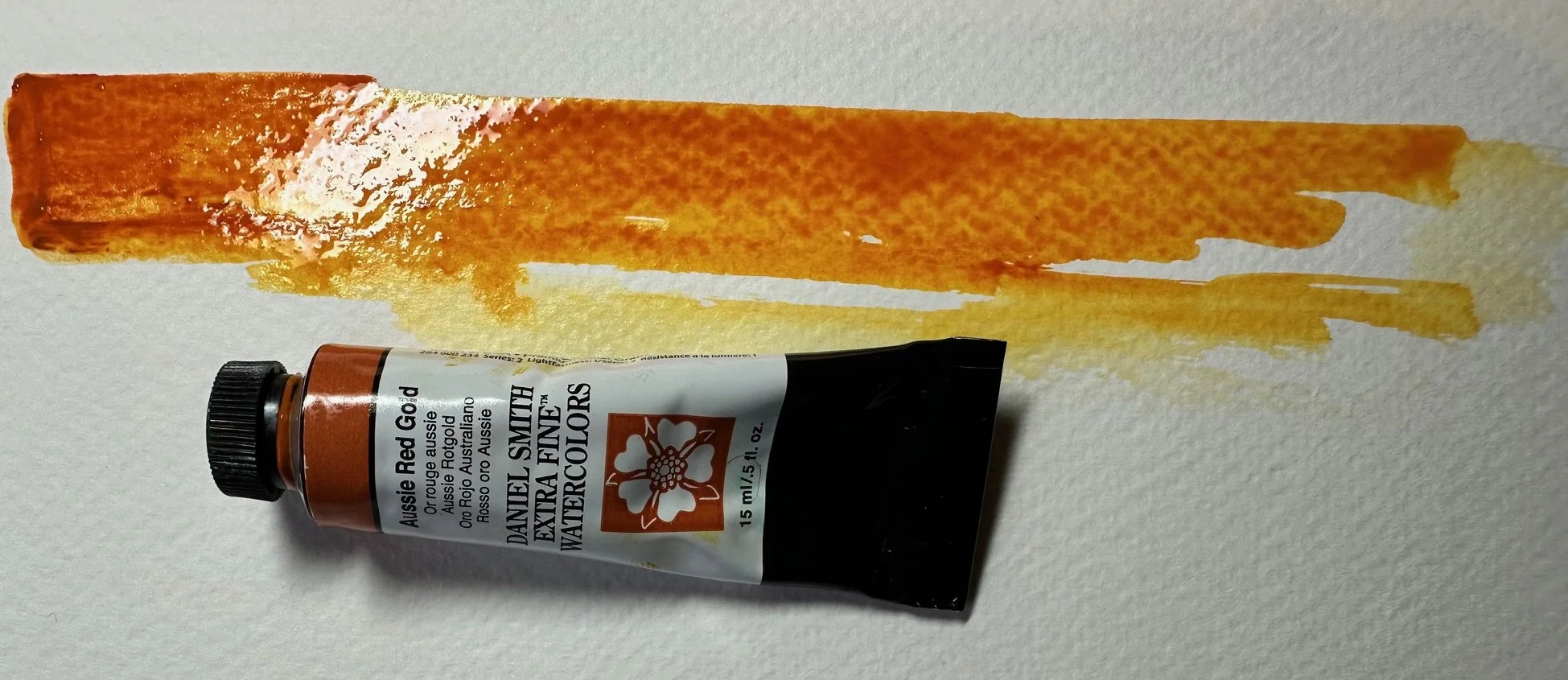Travelling Through My Colour Palette
Antwerp, India, Australia, Piemonte and Bordeaux. What do these names have in common with my watercolour pallet? They are all included in the name of a paint pigment. Join me on a virtual journey, discovering a few pigments in my palette. There are many blue paint pigments with the name of a city associated with them. One of my favourite colours is Antwerp Blue. It is a pigment that dates to the 17th century, derived from Prussian Blue base (a very deep blue color) that has been lightened with the addition of a little bit of white. For the next pigment, we will have to journey back into history. Prussian Blue, also known as Berlin Blue, Brandenburg Blue and Paris Blue, is a darker pigment than Antwerp Blue and is produced by the oxidation of ferrous salts. The pigment dates to the early 18th century and is the first modern synthetic pigment. Prussian Blue is used extensively in the The Great Wave of Kanagawa by Hokusai. An interesting fact, and one that I only learnt while researching for this blog, is the importance of Prussian Blue as an antidote for certain heavy metal poisonings such as thallium and radioactive isotopes of caesium. Prussian Blue binds with the metals making them less dangerous. But we must continue our journey and will now make a long journey to India to explore two colours – Indian Red and Indian Yellow. It is said that the name, Indian Red, originates from the red iron-ore rich soil found in India. The colour dates back to prehistoric times. It is now manufactured from synthetic iron oxide. It is a fascinating pigment and can contain hues of yellows, oranges, reds, violet-browns and green-browns. It is regarded as a cool color and is a semi-opaque pigment. It is light resistant and therefore has been widely used in the old masters and remains a firm favorite for many painters today. Another colour to explore while in India is Indian Yellow. It is said to originally have been manufactured in rural India from the urine of cattle fed on mango leaves and water. The urine would be collected, and then dried into balls of raw yellow pigment. The discussion about the origin of Indian Yellow continued. A British chemist reported in the 1840’s that it was his impression that Indian Yellow was of vegetable origin, and that it was saturated with magnesia. The debate continued, and in studies as recently as 2017, it was postulated that the paint indeed was of animal origin. It is one of my favorite yellow pigments to use, and I am happy to report that we do not have to travel to India to find it, but that it is now produced as a mixture of various other yellow pigments.Our next destination is south, to Australia; we are somewhere in the outback, sitting on the verandah of a house at sunset, amidst a dust storm. Can you imagine the colors that you will see if you’re brave enough to weather the storm? The pigment that comes to mind is Aussie Red Gold. Daniel Smith, the manufacturer of the pigment describes the pigment as “a rich, golden color of ochre cliffs set aflame at sunset”. It is a combination of three pigments, resulting in a warm yellow orange colour, a favorite pigment of mine to combine with Indigo. It is time to return home! But before we get back to the dark and wet days of Antwerp, and the Belgian winter, we need to make a short detour in Italy and France. Our stop in Italy is to discover Piemontite Genuine, a pigment grounded from scarlet-colored minerals from the hills of Italy. It is a dark ruddy violet color and granulates in a very interesting way, perfect to use when painting autumn leaves, or adding shadows to a scene. It is also known as a Primatek color, pigments made from natural minerals mined from around the world. Our travels are almost done. One last stop, this time in the Bordeaux area of France. The pigment that called for a stop here is called Bordeaux. It obtained its name in 1891 in honor of Bordeaux wine. Like wine, the pigment has a dark red color. The pigment has many different shades, and at times have been called Burgundy, claret, or maroon or carmine. A well known painting containing Bordeaux is Rolla, painted in 1876 by Henri Gervex.But alas, our travels must come to an end. There is work at home to be done and cards to be painted. And the Christmas tree needs decoration. Until next time, perhaps a journey through nature to explore the green pigments in my palette! 







